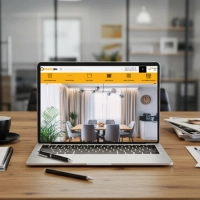
Selling your products via e-commerce has many appealing features. The flexibility not found in a physical store, reaching more customers faster and at lower costs, various incentives, and many other factors make this form of commerce attractive. However, the most common challenge every e-commerce company must address to achieve success is logistics.
Storage
Warehousing, the first step in logistics, requires accurate planning and constant monitoring. In complex operations like e-commerce, it's crucial to determine the warehouse layout and the methods to be applied at entry and exit points, and to maintain these processes accordingly. Products with expiration dates should be stored according to the FIFO (first in, first out) principle, and sold products should be shipped to consumers accordingly. Furthermore, the warehouse location should be chosen within easy reach of the shipping companies you work with. Having a warehouse that's difficult to access or located far away can inevitably lead to problems with shipping companies, potentially inconveniencing your customers.
Distribution
For e-commerce companies seeking to connect their products to consumers through their own distribution network, the distribution network is a meticulously managed operation that ensures products are delivered to customers in the right way, at the right time. The number of employees, the number of branches, and other factors must be meticulously planned and implemented, tailored to your company's structure. You should pay attention to the demeanor and behavior of your employees, both when representing your company and in their interactions with customers, and to their language, tone, and competence.
Action Plan
When planning the logistics aspect of your e-commerce operations, it's essential to have an action plan to address potential challenges. Plans for addressing these challenges provide the flexibility to continue operating without compromising your company's profitability during challenging times. To illustrate, during the coronavirus pandemic, which we are currently experiencing, you'll quickly notice that e-commerce companies that plan effectively experience rapid growth and diversify their businesses. However, the fate of companies without an action plan and unable to move beyond simply surviving the day is clear. Therefore, you should always be mindful of the fact that e-commerce companies built with considerable effort can be doomed to failure due to a simple inaction.
During the pandemic, we frequently observed e-commerce sites experiencing delays in meeting consumer needs. Consumers struggled to access their purchased products for days, and in some cases, weeks. Those with sufficient resources to overcome these and similar situations crowned their success by restructuring their logistics and shipping networks. They distinguished themselves from their competitors and found a broader audience in the industry.
Dealerships
You might be selling products from different companies as a reseller. You might even be engaging in the recently popular business model of dropshipping (stockless e-commerce). In either case, the stock of the products offered for sale will not exceed a certain amount, or you might not even have to deal with logistics at all. In models where you have no logistics involvement, you're likely to encounter problems due to your dependencies. To avoid this, you should structure your procurement process correctly or utilize the support offered by various automations.
Each step in logistics operations has different dynamics and requires careful attention. We'd like to discuss a solution you can use for things like inventory control, regularly deducting sales from inventory, inventorying your warehouses, and delivering products to consumers.
Comwize is an integrated solution that provides software support and various services needed by e-commerce companies for their logistics operations. We recommend exploring Comwize's services for warehouse management, inventory tracking and management, order management, and cargo integration and tracking.

























